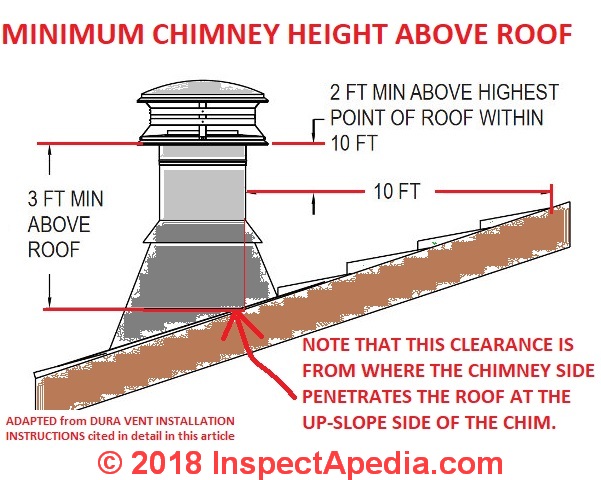
You are safe with brick, stone and plaster as these are NON-combustible materials.
Masonry stack chimney clearance to combustibles full#
A1 fire-rated means that it will not catch fire, full stop, and it will not fall apart in a fire. pink plasterboard might be rated as holding back fire for “x” minutes but this is not the same as A1 fire-rated). Materials such as “pink plasterboard” might have increased levels of fire resistance but this does not make them A1 fire-rated (e.g. Plasterboard is officially a combustible material. The floor underneath a stove or in front of the glass can get much too hot to touch and a suitable hearth is imperative.Ī “combustible material” is any material that is not A1 fire-rated or to as high a specification as this (your sofa and that wooden beam are definitely combustible materials!). Building regulations must sensibly cover all eventualities (including a pipe glowing red hot) to protect property and life. If deposits attached to the inside of a flue catch fire then a flue pipe can even glow red (worst case scenario and extremely rare). In normal operation a flue pipe will be at 150 to 250 degrees centigrade but can go a lot higher. If you have not used or owned a stove before you might not be aware quite how hot the stove and the flue pipe can get.

It’s worth following the rules and regulations when it comes to wood burning and multifuel stoves.


 0 kommentar(er)
0 kommentar(er)
